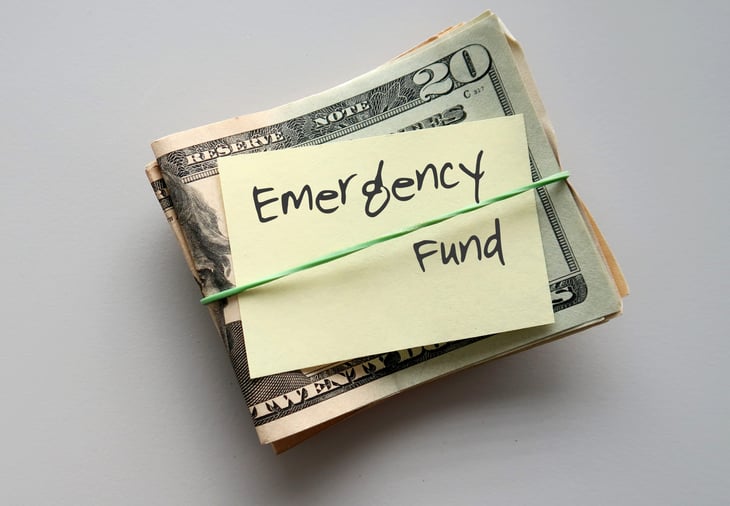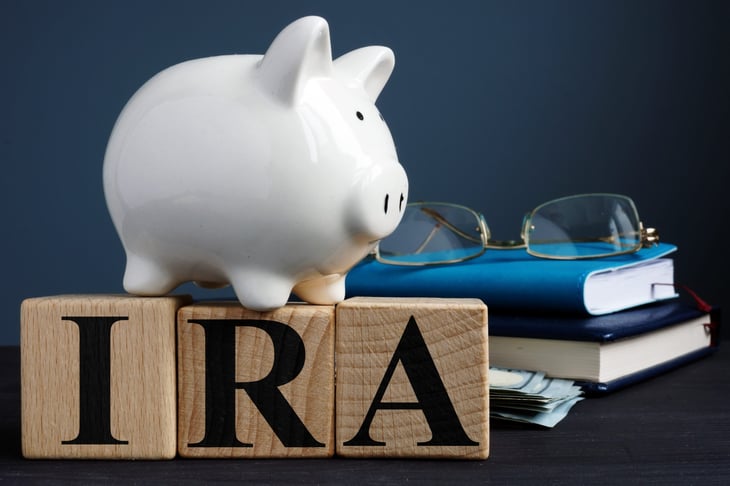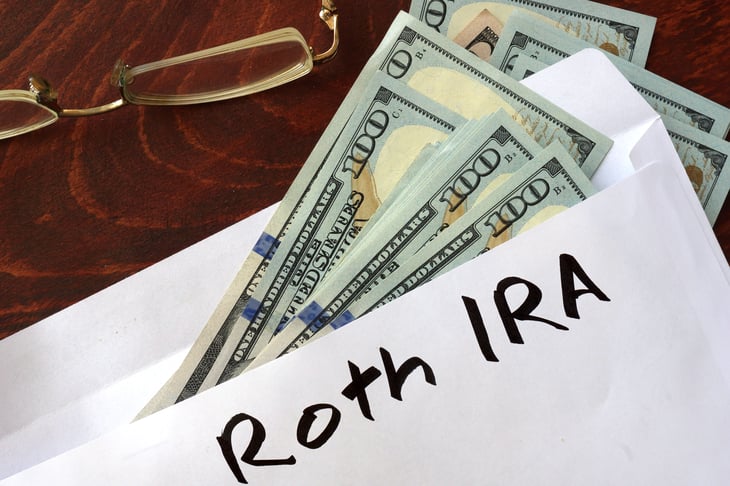
Editor's Note: This story originally appeared on The Penny Hoarder.
We all start the year off with good financial intentions. However, like most New Year’s resolutions, life gets in the way.
Maybe your rent went up, or you faced unexpected medical issues. Or, on the flipside, you got a raise at work (lucky you!)
The point is, everyone’s finances change during the course of a year. That’s why a mid-year financial review can be the key to hitting your 2024 financial goals.
Before we jump in, let’s cover the basics. What does a mid-year financial review entail?
A personal financial review means examining all aspects of your spending, budget, savings, debts and more to assess your overall financial health. That way, you can make smart financial choices for the rest of the year.
How to Do a Mid-Year Financial Review

We know tackling this checkup might sound daunting. It potentially is the make-it-or-break-it moment you need to redirect your finances.
To make it easier, we’ve boiled it down into eight simple steps to help you feel on top of your money.
1. Review Your Spending for Strengths and Weaknesses

The first step of a mid-year financial review is pretty obvious: figure out where your money is going. This can be as simple as pulling up your bank or credit card statements for the first six months of the year. You also could use a budgeting app like Cleo, Empower or Quicken Simplifi.
From there, you’ll want to go through your expenses line by line. Look for any trends that are telling or surprising. Maybe you’re still paying for a streaming service you forgot about or you notice a recent uptick in dining out.
Also, look at expenses that changed or are more than you thought. For example, you might be paying more money than you thought in tolls each week. Maybe your phone or cable bill recently increased by $15 a month.
The purpose of this is not to feel guilty about your spending but to be honest about where you’re putting your money. Many of us are spending money on things we don’t even think about.
Yes, some of the patterns might prompt you to cut back on frivolous spending. However, the real goal is to make informed spending decisions as you plan the rest of your year.
2. Check in on Your Financial Goals

Now that you’ve got an idea of your spending, it’s time to examine your goals for this year. Did you want to focus on retirement or build a more diverse investment portfolio? How did you want your money to build for you?
Next, consider if any of these goals have changed. Maybe you’re now expecting your first child and college savings accounts have gotten more important. If you recently switched jobs, your new company might offer a better 401(k) match.
Whatever your goal is and however it has changed this year, mid-year is a great time to adjust and recommit to meeting those targets.
3. Realign Your Budget

With the reality of your spending and goals in mind, it’s time to address your budget. While reviewing spending is important, tweaking your budgeting is your plan for the future.
If you already have a budget, use this checkup to adjust it to match reality. Start by taking a look at your income and updating your budget for any changes.
Did your boss give you a raise, or did you start freelancing? Increase your budget income to reflect that and consider putting some of that windfall into savings.
Or, have you recently experienced a layoff or a decrease in contract work? Lower your budget income accordingly and start looking at your non-essential spending for some wiggle room.
Check each spending category and track which ones you regularly over or under spend in. You might separate these categories into essential living expenses and nonessential lifestyle expenses to see where you need to shift your planned spending.
4. Prioritize Managing Debt

Paying off debt is often a top financial goal for people. Doing so as quickly as possible is a major investment in your future financial freedom.
There are two major methods when it comes to debt repayment: the debt avalanche method and the debt snowball method. Mid-year is a good time to examine which method you’ve been using and how it’s serving you.
The debt avalanche method is all about paying the least interest possible. You start by listing your debts by interest rates and paying off the highest interest debt first. The goal of this method is to save you money by saving you interest payments.
If tackling that high-interest debt sounds daunting, the debt snowball method might be more your style. The debt snowball method is about chipping away at your debt to create momentum.
You start by organizing your debts by the size of the debt and paying off your smallest amount first. Because interest rates aren’t taken into account, you might end up paying a little more interest over time, but quickly crossing off a debt serves as motivation to keep going.
More Methods to Get Out of Debt

It really doesn’t matter which method you chose, it just matters that you’re working to get out of debt.
There also is the debt lasso method. This is more complicated and involves moving debt around to monopolize on certain credit card benefits. It can be beneficial but also challenging to keep track of.
If this all feels overwhelming, you might try the debt snowflake method. This method is about throwing tiny payments at your debt and letting it pile up to a big dent.
And if you need outside help, you can turn to debt settlement companies like National Debt Relief or get a credit card consolidation loan from companies like AmOne.
5. Secure Your Emergency Fund

Unexpected expenses often are the biggest hits to personal finances. Maybe you broke your leg after finally trying snowboarding, or a hail storm came through and totaled your new car.
You can’t predict these unfortunate events, but you can financially prepare with an emergency fund. Most finance experts recommend saving three to six months worth of expenses in an emergency fund.
Your budget can help make it easy to calculate how much you need.
Simply take your necessary monthly household expenses and multiply by three. While this can feel like a lot if you’re starting from scratch, remember some money is better than none, so start now and save what you can.
If your emergency fund is already secure, you can examine where you’re actually keeping it. If your emergency funds aren’t in an account accruing interest, you might want to consider moving it to one of our 11 best high-yield savings accounts to get a better return.
6. Plan for Retirement

Retirement savings can often feel like a scary subject. But there is a lot you can do to boost your retirement savings even part way through the year.
First, you’ll want to check your company’s 401(k) match (if they offer one) and take full advantage of it. Make sure you understand how much they match and when that match will vest.
If you discovered some surplus when you reviewed your spending, consider upping your 401(k) contribution. This will not only build your retirement account, but also lower your taxable income.
If you don’t have a 401(k) through work or have already maxed it out, you might want to consider opening an IRA. There are two types of IRAs that offer different types of benefits to your finances.
Traditional IRA

With a traditional IRA, taxes are withheld when you put money in, so it lowers your taxable income this year.
However, you do pay taxes in retirement when you pull money out and will receive a 10% IRS penalty if you choose to withdraw money before the age of 59 1/2.
Roth IRA

With a Roth IRA, contributions are made after taxes are withheld, so it does not lower your taxable income for the year. However, the benefit is that when you do pull the money out, you don’t pay any taxes on the funds.
The great thing about both types of IRAs is that, unlike with a 401(k), you can contribute to them all the way through April for the previous year, making June a great time to start making regular deposits to an account.
7. Review Investments

Halfway through the year is a great time to check in on your other investments and see how they’re doing.
Just be careful not to make a knee-jerk reaction based on the last month, because financial markets tend to go through ups and downs. Instead, look at your investments over time and see if your portfolio is working for you.
You also might consider whether or not your risk level has changed during the first part of the year. You can calculate your risk tolerance and use that information to rebalance your portfolio as needed.
8. Double-Check Your Taxes

Changes such as starting a business, selling a home, or having a kid can change your tax withholdings and credits throughout the year. Getting a handle on these changes now can save you a headache come tax season.
First, you’ll want to make sure all your tax documentation is in order. This might mean organizing your receipts for your itemized deductions or meeting with your tax person to check your information.
You should also make sure you have the right withholdings taken out of your income. One easy way to check your withholding status’ accuracy is to look back at last year’s taxes. Did you end up owing a lot in taxes? Then consider upping your tax withholding status. If you wound up with a large tax return, then consider lowering your withholding status.
Remember, a tax return is not free money — it’s more like an interest-free loan you gave to the government for a few months. You want these withholdings to be as accurate as possible so you have a good idea of what you’ll owe come tax season.
If you’re self-employed, you also want to check up on your self-submitted quarterly estimated taxes. Do these taxes accurately reflect your income so far this year? Should you adjust your planned tax payments for the future? You can also look at our tax tips for the self-employed for more ways to be prepared come tax season.
A Mid-Year Financial Review Can Benefit Anyone

Once you’ve gone through our mid-year financial review checklist, you should feel ready to finish out the year financially healthy. There is always a lot to keep track of when managing your money, but a holistic review like this one will help you feel more in control (and, frankly, accomplished — go you!).
Whether you’re choosing to focus on getting out of debt, building a nest egg or saving for your next big adventure, you’re now equipped with the plan to get there. Now get out there and make it rain!





Add a Comment
Our Policy: We welcome relevant and respectful comments in order to foster healthy and informative discussions. All other comments may be removed. Comments with links are automatically held for moderation.